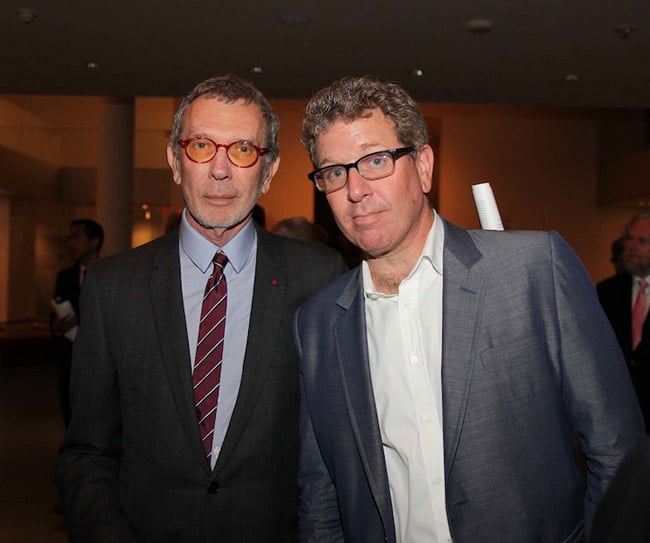Galleries
Pace Has Closed Its Beijing Branch Amid Escalating US-China Tensions. Will Other Western Art Galleries Follow Suit?
Arne Glimcher says its "impossible" to conduct business in mainland China right now.

Arne Glimcher says its "impossible" to conduct business in mainland China right now.

Eileen Kinsella

Over 10 years ago, Pace became the first major Western gallery to open its doors in mainland China. Now, it is becoming one of the first—and undeniably the highest profile—to walk away. The gallery has closed its Beijing branch amid escalating tensions between the United States and China and a radically shifting art landscape in the region.
The news of Pace’s closure comes as a surprise, particularly at a time when other blue-chip US and European galleries, such as Lévy Gorvy, Hauser and Wirth, Lisson, and Almine Rech, are launching new operations in Shanghai and Beijing. The fact that Pace—a longtime supporter of Chinese art stars like Zhang Xiaogang and Yue Minjun—is pulling out of the city is being viewed by many as an ominous sign of what’s ahead.
“It’s impossible to do business in mainland China right now and it has been for awhile,” Pace Gallery founder Arne Glimcher told ARTnews, which first reported the closure. “The last straw is Trump’s duty on Chinese artists coming into this country and Xi Jinping’s duty on Americans coming into China.”
Glimcher also cited the 38 percent luxury tax on purchases of art on the mainland as a major business hurdle. Meanwhile, Trump has recently proposed a 25 percent tariff on art and antiquities more than 100 years old imported from mainland China.
Glimcher still plans to maintain an office and a viewing room in Beijing. The gallery will also continue to operate its space in Hong Kong, which is not subject to the same tax, business, and trade constraints as mainland China.
The challenges in the mainland Chinese market began well before the Trump Administration, according to Glimcher. “Since Xi has come to power, people are afraid to conspicuously show their wealth and the mainland Chinese are not buying in China,” he said. And “if they are, they [are] buying for their apartments in other places in the world and they come to Hong Kong anyway.”
Indeed, in the decade-plus since Pace opened in Beijing, Hong Kong has become an ever more central art hub, where many more Western galleries (not to mention Art Basel Hong Kong) have opted to set up shop. This rise has also corresponded with an explosion in the number of Chinese collectors, whose taste is shifting away from Chinese art and toward international names whose work they can buy in Hong Kong or elsewhere.
Greg Hilty, curatorial director of Lisson, which opened a space in Shanghai earlier this year, tells artnet News he was “really sorry to hear Pace will close their Beijing Gallery, it’s had an interesting program over the past 10 years but maybe they feel it’s fulfilled its purpose.” He noted that “there are other ways of doing business with Chinese and while the tariff situation is troubling, the underlying 1 percent import tax plus 13 percent sales tax is workable. Ultimately we believe the Chinese and Western art worlds and markets will draw ever closer, and our own activity is designed to support this.”
Philip Tinari, the director of UCCA, a contemporary art center in Beijing, noted that it is difficult to overestimate the impact of Pace’s opening back in 2008. (He covered the event for a column in Artforum at the time.) But since then, he said on Twitter, “a lot has changed… including notably the appearance of a major international fair in Hong Kong and the concurrent/subsequent (depending who you ask) emergence of that territory as the primary market hub for Greater China.”
So I'm sad to see Pace's venture here come to an end, but caution against seeing a business decision by a single gallery as proof that, in Glimcher's words, "culture has to be sacrificed by these administrations who don’t understand its value or its role in society."
— Philip Tinari (@philiptinari) July 9, 2019
Tinari said the idea “of a major international brick-and-mortar gallery in Beijing selling from its exhibition program and storeroom was always going to take a lot of doing. Censorship was always an issue. Customs duties were more onerous then than now.”
But he cited the wild success of Pace Beijing’s ticketed teamLab exhibition in 2017 as a sign that potential to cultivate a new audience remains. “While things continue to tighten under Xi, and while trade frictions make US-China commerce more difficult,” he wrote, “the public for art in Beijing continues to grow. In spite of the strictures, art provides space for thinking and inspiration that would not otherwise exist.”